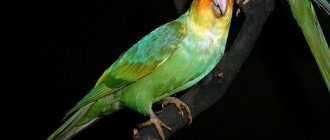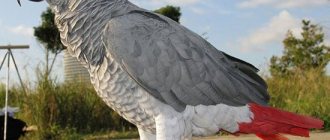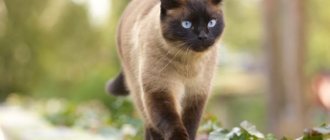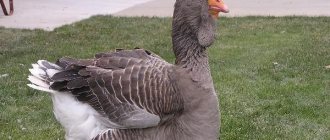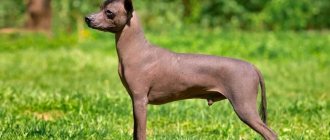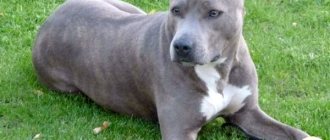Hamster - description and brief description
Both wild and domestic rodents have a small body. Depending on the species, pets can reach 5-15 cm in length, and the largest of them can reach 36 cm. The animals have a short tail, which rarely exceeds 6 cm in length. The paws of furry animals are squat, but strong and resilient.
More often, hamsters have soft and fluffy fur, but in nature there are breeds of hairless rodents. The animals have neat ears that pick up the smallest sound vibrations. The fur has a gray or brown tint, and the neck and belly are painted white.
Hamsters store edibles behind their cheeks, which hold a large amount of grains. Cheek pouches are a developed part of the body of rodents. If you take individual varieties that reach a length of 30 cm, they place up to 60 g of grains in their mouth.
Sungur hamster
Belongs to purebred representatives of the Khomyakov family. This is a dwarf form that reaches a length of only 8-10 cm. This is a Russian hamster, as it is found in the steppes of Siberia. It has characteristic features:
- large cheek pouches where he hides his supplies,
- fluffy paws resembling bloomers,
- does not reproduce in captivity,
- has a positive attitude towards “sharing”: does not quarrel with other members of the family,
- active and mobile, especially at night,
- likes to escape from the cage, gnawing passages, and it is very difficult to find it due to its small size.
Note: The Russian hamster changes its color in winter and can become almost white; during the rest of the year the color is dark, most often the hamster is brown.
Types and names
There are many types of hamsters, differing in size and color:
- Djungarian hamsters. Unpretentious in care. They live up to 3 years. Predisposed to diabetes. It is better not to feed your pets food containing monosaccharides. The animals are more fertile than the Syrian hamster. Unlike Djungarian hamsters, Syrian hamsters are less demanding to care for. The Djungarian hamster family differs in color from wild rodents - they have a characteristic brown color, while their wild relatives are gray.
- Field hamster. A large representative of the family, reaching a length of 35 cm. The pet's tail is wide at the base and thin at the end. An adult male reaches 0.7 kg. Fur color: the belly is black and the back is brownish-red. Therefore, the pet looks unusual. In nature, there are rodents that have a black color - these are “melanists”. This species is native to Altai, Eurasia, Belgium and northern Xinjiang. In the wild, the rodent lives up to 4 years, and in captivity up to 6 years.
- Common hamster. Rodents reach an impressive size of 35 cm. The muzzle of an ordinary hamster is similar to that of a mouse, but the ears are much smaller. The paws of such representatives are short, with well-developed claws. The rodent has a reddish fur color on its back and a dark belly. This breed of hamster has 10 subspecies, differing in size and color.
- Campbell's hamster. This family of rodents lives in Kazakhstan, Mongolia and China. They live in Russia, Buryatia, Transbaikalia and Tuva. The size of the pets does not exceed 10 cm, weight is 25 g. The Campbell's hamster is often called Chinese or Mongolian, depending on its habitat. The inhabitants of the wild are grey. Pets have a variety of fur colors: brown, gray, black, white, red.
- Roborovsky's hamster. This type of rodent is the smallest, which is what attracts hamster lovers. The body length of an adult does not exceed 5 cm, and the weight is about 30 g. The back and head have a beautiful sandy color, and the tummy is white. Life expectancy is 3 years.
- Sungursky. Wild representatives of the breed can be found in the steppes of Kazakhstan and Siberia. Sungur hamsters are often called Siberian. This breed belongs to the dwarf family, due to its rather tiny size (10 cm in length). Rodents have small, bead-like eyes. In winter, the animal changes its coat color to white, and in summer, the coat acquires a characteristic brown tint.
There are also other types of hamsters:
- Manchurian;
- angora;
- Persian;
- Australian;
- radde;
- Bengal;
- long-tailed;
- royal;
- Burgundy and others.
Syrian hamster
This type of hamster is also called Western Asian. This breed is larger than the Djungarians. Body length reaches 20 cm, body weight 100-200 grams. The tail, legs and ears are short.
The Syrian hamster, both in nature and in captivity, can live on average 2 years.
Syrians have quite a variety of colors. The standard coat color is golden, reddish, peach. As a result of selection, individuals with black, brown, and yellow colors were bred. Also, some individuals of this species may have a spotted or tortoiseshell coat color.
Syrian hamsters can be divided into several types based on fur length:
- Shorthair;
- Long-haired;
- Hairless;
- Satin;
- Rex.
This species has a calmer disposition. But they can also show a strong character. They are friendly towards humans and aggressive towards their fellows.
It is not recommended to house same-sex individuals in the same territory, just like dzhungariks. Their frequent fights can lead to death.
Who to choose - female or male?
Beginner hamster lovers are faced with an important problem - getting a female hamster, a male or both at once. If you take pets in pairs, they will breed every 1.5-2 months.
There are practically no differences in the behavior of males and females. Females are more affectionate, they are cleaner, and they keep the cage in relative order. Compared to males, female rodents take more careful care of their own coats.
The rodent must be mobile. After purchasing an animal, to exclude diseases in your pet, it would be wiser to observe it. The first signs of the disease: lethargic behavior, lack of mobility, souring eyes, matted fur, excessive aggressiveness.
To avoid allergic reactions to natural wool, it is better to purchase a smooth-haired rodent. The short-haired rodent leaves virtually no traces of fur on carpets and furniture.
The best option is to buy one pet. If you suspect that your pet is bored, feel free to buy a pair. In this case, you need to come to terms with the appearance of offspring, which can be taken to the nearest pet store or zoo. Also, matured hamsters can be given to relatives, friends or acquaintances.
How to determine the breed of a hamster: algorithm
You need to rely on several points. These are: body length and color.
- Up to 5 cm, white belly and beige-brown back - Roborovsky's hamster.
- Up to 10 cm, with a predominance of gray color, with a black stripe on the back - jungarik.
- About 15 cm and a small tail, golden, uniform in color - Syrian hamster.
- Within 14-15 cm, the abdomen with legs is white, and the back is dark, then this is a Campbell's hamster.
These are the most common breeds to keep at home. If you need to determine the breed of small hamsters, then you should look at their parents, if possible, or focus on color.
Cell selection
The animal spends most of its life in a cage. It is important that the cage is equipped with additional elements that will not allow the animal to get bored.
A metal cage with vertical or horizontal bars is the best option. Sizes depend on the breed of the pet. For dwarf hamsters, choose a cage measuring 30/50 cm. For larger individuals, cages of 40/60 cm are suitable.
Tall and narrow aquariums should not be used to keep hamsters. In such aquariums, harmful bacteria actively multiply. This is facilitated by high humidity and lack of access to fresh air. Bacteria can cause serious illnesses that lead to the death of the hamster.
Wheel
To prevent the pet from getting bored, a wheel is placed in the cage, which diversifies the pet’s daily life. The wheel is chosen based on the size of the animal. If you select a wheel that is too small, the hamster will get its paws stuck, resulting in injuries to the spine or limbs.
In addition to the size of the wheel, you also need to pay attention to the material of the product. It is better to refrain from purchasing mesh wheels, since falling through the bars can injure your pet’s paws. A good option would be to purchase a wheel that is made of solid plastic with a rough inner surface.
Ball
Surely many have not heard of this useful device. This accessory has a number of advantages:
- helps burn excess energy;
- the rodent in the ball explores the world around him without hindrance;
- While in the ball, the pet will not be hurt by the cat.
The ball must be selected solely according to the dimensions of the hamster. It must match the size of the pet.
Common hamster
Want to know which breed of hamster is the largest? This is an ordinary hamster that grows up to 34 cm. It has a long tail (up to 4 cm), which resembles a rat's. The muzzle is like that of an ordinary rodent, and the ears are covered with dark hair. A large hamster can fend for itself, having short but clawed legs.
The color is variegated: the top is red, and the belly is covered with darker hair. There may be white spots on the surface. The fur is thick and soft. The name of the hamster is associated with its breed: it is nothing special. In addition, a large hamster due to its size is not a very popular inhabitant of apartments.
For information: A hamster can live in a cage or glass aquarium. The cage is equipped to create comfortable conditions for the animal. They set up a house, a wheel, a drinking bowl, and a feeding trough. Some try to imitate natural conditions using hoses and pipes. You can create several levels. so that your pet can live comfortably.
What to feed?
Hamsters are omnivores. But if you care about your pet’s health and you want him to live as long as possible, you need to create the right diet. A rodent can chew the following foods:
- food for hamsters;
- nuts;
- seeds (pumpkin or sunflower);
- oat or wheat sprouts;
- cereals;
- most fruits and vegetables that are rich in vitamins and minerals;
- fresh herbs and salad leaves;
- dried fruits;
- twigs of willow, maple, apple or pear;
- low-fat cottage cheese, but not more than a couple of times a week.
It would be correct to place ears of cereal or hay at the bottom of the cage. The material will help the animal set up a new home and will act as additional food.
Feeding occurs 2 times a day - in the evening and in the morning. After watching your furry pet for a while, you will be able to better understand its taste preferences. Fill the drinking bowl with fresh water every day.
Features of care
The long-haired Syrian hamster needs careful care; its fur needs to be combed and any tangled debris removed. The main thing here is not to overdo it; bathing your baby in water is contraindicated - he may catch a cold. The baby himself will take care of the cleanliness of his “hair”. Install a sand bath in the cage so your pet can bathe and clean itself.
Cage and accessories
To make your baby comfortable, buy a cage measuring 50x30 centimeters. A good option is a dwelling with transverse rods. The cage must have a wheel with a diameter of at least 20 cm. This also applies to the house; it must be larger than for short-haired babies. Angora hamsters are very fond of all kinds of labyrinths and pipes, so you can buy a small-diameter multi-story dwelling for them. It’s good if the floors are connected by pipes, stairs or other loopholes.
Filler
The maintenance of “shaggy” dogs is practically no different from their short-haired counterparts, but they have long hair, which excludes shavings as bedding - they get tangled in the wool. For “shaggy” ones, wood pellets are suitable as a filler.
Angora hamster fur care
The home environment that you lovingly create will please the Angora. There is nothing complicated in caring for an animal, there is one “but” - long hair. Remember, she looks beautiful only if she is well-groomed, otherwise the baby will turn into a sloppy creature.
The fur is shaggy and needs to be combed to remove debris and tangled particles. You can use a toothbrush as a comb. It would be a good idea to purchase cleaning powder for long-haired hamsters. It is important to ensure that the wool becomes less dirty.
Feeding the Angora
The Angora hamster is unpretentious in feeding; it is suitable for the same diet as other domesticated rodents, the main thing is to feed it on time with high-quality food. If the baby does not have enough vitamins and minerals, the “hair” may look patchy and unkempt. Therefore, in order for the fluffy Syrian hamster to look beautiful, do not skimp on food.
Diet
Under natural conditions, hamsters use dry plants to build nests and feed on succulent ones, so do not exclude greens from the diet. As for fruits, they happily eat bananas, pears, and apples. Vegetables: carrots, zucchini, eggplant. They also need protein foods. What should you feed your Angora hamster besides store-bought food and treats? To ensure that he receives a full set of vitamins, once a week give him boiled yolk, breast milk, low-fat cottage cheese or kefir.
You need to make sure that your shaggy hamster eats only fresh food.
Periodically check to see if your baby has brought leftover food into the house - he may be poisoned by sour foods.
Favorite products:
- oats;
- corn;
- millet;
- flax seeds;
- green grass;
- dried fruits;
- nuts.
Prohibited Products
You should not give treats that contain dyes, preservatives, or harmful additives. Potatoes, citrus fruits, garlic and onions are strictly contraindicated for representatives of this breed, as well as:
- salty;
- sweet;
- exotic fruits, as well as watermelon;
- honey;
- almond;
- sorrel;
- canned food, smoked meats, pickled foods.
If you give your baby a piece of watermelon or a salted nut, he will not die. But problems with the gastrointestinal tract may begin. And why take the risk? These animals don’t live long anyway.
Duration and lifestyle
The Angora hamster does not need a roommate, so if you have purchased several fluffies, make sure that each has its own cage. If several individuals live in one dwelling, be prepared for serious fights.
Remember: Angora hamsters are territorial animals!
Angora hamsters can live up to 3 years at home. There are cases where representatives of this breed lived longer, up to 3-4 years, but only with good care. There is a world record holder who lived for 7 years.
In order for the baby to live as long as possible, you need not only to take good care of it, but also to choose the right pet. Examine his fur carefully; it should grow evenly, even on the pads of his feet, and be clean in the anus area. The eyes should be radiant and the nose should be dry.
Deviations from the norms can lead to serious illness and death of the pet. Compared to dungarian hamsters, Angora hamsters rarely get sick and have good immunity.
Important: you must visually like the baby.
How to contact?
Gaining trust will take patience and time. All the efforts expended will subsequently be more than repaid, since the pet will soon begin to show affection and boundless trust. So, what not to do:
- make rough and sudden movements with your hands close to your pet;
- pick up a sleeping or recently awakened animal;
- cover with your palms, trying to catch;
- make loud noises near the cage;
- leave the rodent on high ground;
- grab the scruff of the neck with your fingers;
- Trying to introduce a furry cat to a cat would be a fatal mistake.
It is recommended to constantly talk to the animal, give treats from your hands and treat it affectionately.
It is important to handle your small pet with care and caution. You should take care of a comfortable living environment: do not leave the cage in a hot or cold place, clean it in a timely manner, change the water, add food.
Roborovsky
Adults of this species barely reach five centimeters in length. A characteristic feature is long legs and the absence of stripes on the back.
The breed is distinguished by its activity and speed; if such a baby leaves the cage, there is a high probability that you will not catch him.
Not suitable for being kept alone, as they become very sad and have little life. In the wild, these babies gather in small communities to feel comfortable and more protected.
If you want to have these animals, do not leave them alone. Place them with members of their own breed, the opposite sex, or an entire family. This way you will provide them with a calm and happy life.
Reproduction of rodents
Hamsters are fertile animals that reach sexual maturity early. From 6 weeks of age, animals are able to reproduce healthy offspring. Breeding hamsters is simple. Pet pregnancy lasts 17-35 weeks. In one litter there are from 1 to 18 cubs, weighing up to 5 g.
A female hamster can become pregnant regularly throughout the year, producing up to 8 litters over 12 months. It is worth noting that until the animals reach 6 weeks of age, they will not be able to mate.
The birth of a hamster is an event because a tiny rodent is born without hair. You should not handle hamsters for the first 14 days, after which the female will refuse them. 30 days after birth, the hamsters are placed in cages, taking into account their gender.
In the wild, the rodent lives from 2 to 4 years. It all depends on the habitat and climatic conditions. In captivity, provided proper care and a favorable atmosphere are created, the pet lives up to 6 years. The main thing is to create a healthy daily diet for your pet and keep the cage in proper condition. These measures affect the life expectancy of the fluffy.
Campbell's hamster
The Campbell breed is often confused with the Djungarian, but their hind legs are bare and have stripes on their sides. The color of the hamster is brown, sand, cream, and may have red shades. They adapt poorly to life in new conditions and have difficulty taming. They do not tolerate representatives of other breeds in a cage; they live more quietly alone. They love to bite, so wear gloves when handling them. It is better to get this breed from those who have experience with rodents.
For your information: It is risky to let a hamster out of its cage into a room where it will be difficult to find. If the animal escapes, then you can catch the animal in its own cage, which you need to put on the floor and put tasty-smelling food in it. The hamster will go for a treat and will be caught.
Cambell's hamsters
Some beginners who decide to get hamsters by purchasing a dzhungarika quickly become convinced that they have a quarrelsome nature and often bite the owner, as well as other rodents. Alas, in most cases there is a common mistake - an inexperienced breeder acquired a Campbell hamster.
Cambell's hamster
Outwardly, it is indeed very similar to the dzhungarika - both in color and size. But it is given away by two features that experts are well aware of. These are bare hind legs, as well as characteristic stripes running along the sides.
And they really do not have the best character - among small breeds of hamsters they are considered the most aggressive, which is why a beginner should not start getting acquainted with the world of rodents with them.
Albino hamster with red or black eyes
And again we have to disappoint you - there is no separate breed of albinos with a specific eye color. Almost any living creature (even humans) can be born an albino.
Usually hamsters have black eyes, but albinos often have impaired eye pigmentation (this is the color on the inner surface of the eyeball). As a result, it becomes transparent and the red color we see is blood vessels.
An albino with any eye color is no different in caring for an ordinary animal of the same breed.
Other breeds of hamsters
Let's take a look at the representatives of hamsters that are not recommended to be kept at home. You need to know about them, at least so that they don’t slip you a wild animal under the guise of a domestic, soft and fluffy pet.
Hamster Radde
The very prolific Radde hamster is a wild pest that can gain 1 kg of weight with a length of up to 28-30 cm. Appearance: the main brown color is combined with light inserts on the abdomen and face.
Eversmann's hamster
Eversmann's hamster, which lives mainly in Mongolia, has an average height of 15 cm and a short tail (up to 2 cm). The predominant color is a brown back with a light belly with a dark spot on the chest. There is a variety of Eversmann's hamster - Mongolian. Differences from the first:
- Mongolian is a little less
- The color is lighter (closer to gray)
- No spot on chest
Chinese hamster
The Chinese hamster lives, as the name implies, in the former Celestial Empire. A small (10 cm) brown animal with a dark stripe along the ridge. Very similar to a mouse, the bare tail adds to the similarity.
Hamster Sokolov
Even scientists know little about Sokolov’s hamster. It lives in Mongolia and China, reaching a length of slightly more than 10 cm. The skin on the back is gray with a dark stripe, the belly is light.
Barabinsky hamster
The Barabinsky hamster is native to Western Siberia and Mongolia. Grows up to 13 cm. Color – light brown, sometimes reddish, with a stripe on the back. The belly is lighter, sometimes even white. An interesting feature is the two-color ears (with a white border at the edges).
The Daurian hamster is a variety of the Barabinsky breed. It is distinguished by a darker color and a clearly defined spinal stripe.
Newton's hamster
Similar to the Syrian, both in shape and size (grows up to 17 cm). The fur on the back is gray-brown, the muzzle and chest are reddish. Unlike the Syrian breed, the character is vicious.
Short-tailed hamster
The short-tailed rodent is a high-mountainous inhabitant, the main habitat is Tibet. Grows up to 8-10 cm. Color is a mixture of gray, yellow and brown.
Dzungarian (aka Sungur)
Yes, this is not a typo - the Dzungarian hamster and the Sungur hamster are the same breed. In common people, the pet is called a dzhungarik after the name of the region in China, its natural habitat. Sungurik - from the scientific name Phodopus sungorus.
Other erroneous names for dwarf hamsters are Siberian hamster and Russian dwarf. Such breeds of pets do not exist in the classification; if they are trying to sell you a Siberian or Russian at an inflated price, find another seller.
Sungursky is a dwarf species, grows up to 10 cm in length and gains a weight of 45-65 grams. The “feet” on the paws are covered with hair. The color on the back is dark, on the belly it is almost white. A characteristic difference is a clearly defined thin dark stripe along the ridge.
The “standard” back color is brown or dark gray. But there are decorative colors:
- Sapphire (gray with a bluish tint);
- Pearl (snow-white);
- Tangerine (similar in color to the golden Syrian).
The Dzhungarik changes its coat color depending on the time of year (lighter in winter), but this rarely happens at home.
The character is perhaps the friendliest among all hamsters. Djungarians often like to be stroked on their backs and bellies; they willingly fall asleep in your arms.
Lives in captivity for an average of 3 years, but with proper care, 4 are possible.
You can house opposite-sex pairs (just keep in mind that they will reproduce quickly and actively). It is better not to keep same-sex Dzungarians together; they do not get along well.
The tiny size leaves an imprint on the maintenance and feeding of the baby. Read about care in detail in this material.

